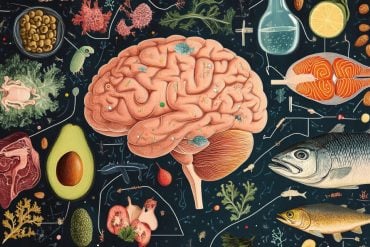Summary: Longer and higher exposure to estrogen were associated with larger gray matter volume in middle-aged women.
Source: Alzheimer’s Research UK
A team of US-based researchers has found an association between indicators of longer estrogen exposure and reduced brain shrinkage in midlife women.
The findings are published today in the scientific journal, Neurology.
Previous research into the effects of estrogen on brain health has shown mixed results. Some studies have suggested that lower estrogen levels following menopause could be linked to brain aging and Alzheimer’s risk later in life.
The researchers looked at a total of 128 volunteers (99 women and 29 men), aged between 40 and 65 all with risk factors for Alzheimer’s disease, such as the APOE4 risk gene or a family history of the disease.
A range of reproductive history events were examined by questionnaires and interviews. These events included:
- Whether participants had experienced menopause or a hysterectomy
- The age they started periods
- Their age at menopause
- The length of time between the start of their periods and the start of menopause
- The number of children and pregnancies they may have had
- Whether they use menopausal hormone therapy (HT) and hormonal contraceptives (HC).
The researchers carried out brain scans to look specifically at areas called gray matter, including key regions that are damaged in Alzheimer’s disease. Lower volumes of gray matter have been linked to dementia risk and poorer brain health. All participants also had memory tests to assess their thinking and language skills.
Exposure to estrogen as a result of not having reached menopause, having more children and more reproductive years, and using HT and HC, was associated with larger gray matter volumes in midlife women.
Researchers found no association between reproductive history events and people’s memory scores, but people who scored better did have more gray matter compared to those that scored less.

Dr. Sara Imarisio, head of research at Alzheimer’s Research UK, said: “Two thirds of people with dementia are women and while some of this difference is explained by women living longer, research has also implicated hormones like estrogen. The start of periods, having children, and menopause are significant events in many women’s lives and it’s important to understand how these biological changes might affect long-term brain health and dementia risk.
“This study linked exposure to estrogen to less brain shrinkage, an indication of lower dementia risk, but this is a small study, and it did not explain the causes for the association. The researchers worked with participants in midlife, a key period for brain health and reducing dementia risk, but as the brain scans were not specific to Alzheimer’s disease, we cannot make firm conclusions about risk of developing the condition from this study. Examining the biological pathways through which reproductive history influences cognitive aging and Alzheimer’s disease risk is the next step for researchers to understand this link.
“Alzheimer’s disease is caused by a complex mix of age, genetics and lifestyle factors—some of which are in our control to change, and others which aren’t. The best current evidence suggests that not smoking, only drinking within the recommended limits, staying mentally and physically active, eating a balanced diet, and keeping blood pressure and cholesterol levels in check can all help to keep our brains healthy as we age.”
About this brain aging research news
Author: Press Office
Source: Alzheimer’s Research UK
Contact: Press Office – Alzheimer’s Research UK
Image: The image is in the public domain
Original Research: Closed access.
“Association of Reproductive History With Brain MRI Biomarkers of Dementia Risk in Midlife” by Eva Schelbaum et al. Neurology
Abstract
Association of Reproductive History With Brain MRI Biomarkers of Dementia Risk in Midlife
Objective.
To examine associations between indicators of estrogen exposure from women’s reproductive history and brain MRI biomarkers of Alzheimer’s disease (AD) in midlife.
Methods.
We evaluated 99 cognitively normal women ages 52+6 years, and 29 men ages 52+7 years, with reproductive history data, neuropsychological testing, and volumetric MRI scans. We used multiple regressions to examine associations between reproductive history indicators, voxel-wise gray matter volume (GMV), memory and global cognition scores, adjusting for demographics and midlife health indicators. Exposure variables were menopause status, age at menarche, age at menopause, reproductive span, hysterectomy status, number of children and pregnancies, use of menopause hormonal therapy (HT) and hormonal contraceptives (HC).
Results.
All menopausal groups exhibited lower GMV in AD-vulnerable regions as compared to men, with peri-menopausal and post-menopausal groups also exhibiting lower GMV in temporal cortex as compared to the pre-menopausal group. Reproductive span, number of children and pregnancies, use of HT and HC were positively associated with GMV, chiefly in temporal cortex, frontal cortex, and precuneus, independent of age, APOE-4 status, and midlife health indicators. Although reproductive history indicators were not directly associated with cognitive measures, GMV in temporal regions was positively associated with memory and global cognition scores.
Conclusions.
Reproductive history events signaling more estrogen exposure, such as pre-menopausal status, longer reproductive span, higher number of children, use of HT and HC, were associated with larger GMV in midlife women. Further studies are needed to elucidate sex-specific biological pathways through which reproductive history influences cognitive aging and AD-risk.






